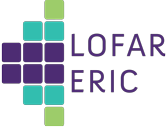Speaker
Description
The International LOFAR Telescope (ILT) represents a unique infrastructure, providing sub-arcsecond resolution at 150 MHz. Such capabilities will be unmatched even in the SKA era, and this makes the ILT desirable for a wide range of scientific cases: however, the full exploitation of this facility brings along many technical challenges, especially related to the data volume and calibration strategies.
In this talk, I will present results from deep (64 hours) observations of the main radio galaxies in the galaxy cluster Abell 2255. The main focus will be on the “tails” of the most extended sources, and in particular on the spectacular wealth of filaments revealed in the Original Tailed Radio galaxy (Original TRG, Harris et al. 1980) combining high-resolution and sensitivity of the ILT: such structures represent unique tracers to study the interplay between the radio galaxies and the turbulent cluster environment.
I will then zoom out on the cluster scale showing the first wide-field, ILT image of the cluster with 8 hours of observations at 1.5” resolution. This represents an unprecedented opportunity for statistical and morphological studies to investigate the effect of cluster environment on a large sample of cluster member radio galaxies. I will discuss the technical challenges involved in the processing of such complex field and the calibration strategies adopted to deal with such extended sources.

